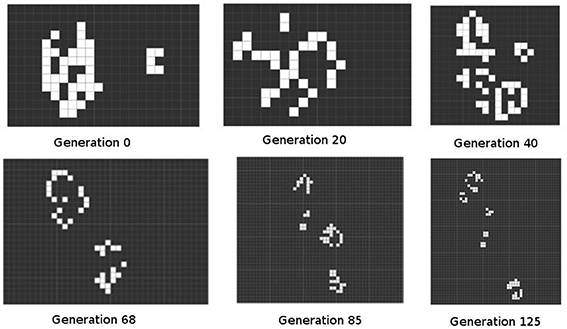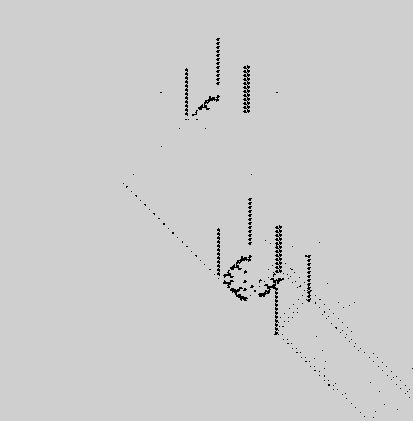As a Texas Software Attorney, I have two heroes in the world of artificial intelligence – Alan Turing, the Founder of AI itself (1912 – 1954) and a little known mathematician whose work will one day eclipse Einstein and Newton – John Horton Conway. I say without hesitation, that once Conway’s discoveries are better understood, they will revolutionize the future development of not just AI but the rollout of the first conscious computers. To me it is an absurdity that not a single computer programmer I have encountered, has ever heard of John Conway. Unlike Einstein, he was not fond of self-promotion or the popularization of his heralded “Game of Life” to be discussed.
It is, therefore, tragic and unremarkable, that very few people noted his recent passing. I didn’t find out until Alexa spit out the following missive with the sensitivity of a dishwasher or other household appliance, “John Horton Conway, mathematician, died April 11, 2020, at a nursing home in New Brunswick, New Jersey, of Covid. He was 82.”
You heard it – that’s right – Covid.
Now, 82 may sound old to most people but not to those of us of a certain age. Regardless, how did Conway end up at a nursing home and with Covid? I can only imagine. What a loss to humanity.
Let me elaborate. Conway is known for creating a human game or simulation known as the “Game of Life”. In an age before the advent of computers, Conway invented a checkerboard game where his university students in the 1970s acted out a series of moves via simple rules governing game pieces – black and white squares. Each game piece (played by a graduate student) represented what Conway referred to as a “cell” or “automata” which was determined to be “alive” or “dead” based on the four configurations stated below. The fate of a particular cell depended on the status of its neighbors – horizontal, vertical, and diagonal. Here were the rules:
- Any live cell with fewer than two live neighbors dies due to overpopulation.
- Any live cell with two live neighbors lives on to the next generation.
- Any live cell with more than three live neighbors dies due to overcrowding.
- Any dead cell with three live neighbors becomes a live cell as if by reproduction.
Conway used his students to play multiple games which he referred to as generations. What he discovered was inexplicable and miraculous – even to this day. These simple rules allowed strange configurations of cells to emerge from nowhere which seemed to have a life of their own. He ultimately determined that self-organizing structures arose which he assigned names including blinkers, blocks, gliders, and so on.

Conway’s Strange Organisms
Here is a video of the Game of Life played out with e-organisms on a personal computer. Conway’s Game of Life Spaceship Gun on Vimeo
The most interesting configuration was an unstable structure called R Penetomino which spawned a myriad of new structures. R-Pentamino Conway’s Game of Life – YouTube
With the advent of personal computers and then supercomputers, the Conway Game of Life was played out over millions of generations electronically. The results were breathtaking as this simple system demonstrated conclusively that there are self-organizing principles, as of yet undiscovered by science. This was evidenced in 2010 by the work of Andrew J. Wade, a Canadian Computer Scientist, who discovered a Conway e-organism of sorts at generation 33,699,586 which appeared to replicate the organic process of RNA. He named it Gemini.

Top Gemini e-life creates below duplicate akin to RNA. Note flow of information thru “Gliders” allowing for replication to occur.
I believe that Conway’s Game of Life and his work which is now referred to as “Game Theory” will revolutionize scientific thought in every area from physics to computer programming. We have yet to even scratch the surface of the significance and import of the Game of Life brought to us by the marvelous life of John Conway.
The brilliant implications of Conway’s Game of Life have yet to be understood, let alone addressed by computer scientists and entrepreneurs in the AI community. Here are the key items of interest by yours truly:
The Game of Life is the first” Von Neumann Machine” which can self-replicate itself. John Von Neumann was also a remarkable mathematician (1903 – 1957) who theorized that nano-machines would one day be able to self-replicate themselves on distant worlds such as Mars. The idea would be to land a machine on the red planet (rich in iron ore) and engage the process of smelting iron ore for production thereby releasing oxygen into the atmosphere. Machine-1 would then have the code to build a copy of itself or Machine -2 which would also engage in the production process and release more oxygen paving the way for Machine -3 ad infinitum. Keep in mind that Von Neumann came up with these concepts before the dawn of digital computers and nanotechnology!
The e-life “organism” – Gemini (above) which evolved on the Game of Life platform is precisely a Von Neumann Machine because it acts exactly like RNA and can duplicate itself. How Gemini even came to be is still unknown to mathematicians and computer scientists, but offers the keys to how complex e-organisms function which may be capable to demonstrating sophisticated programs.
The Game of Life programs evolve in what appears to be infinite dimensions and may ultimately develop consciousness at some level analogous to the process which arose on earth from the inanimate to organic to complexification of life to consciousness.
Use of Game of Life program has also demonstrated the incredible ability to create a self-programmable computer. This is the most practical application for computer scientists and an area which has enormous promise. The idea is to take and control the repeatable e-life objects to create logic gates akin to computer hardware. There is some discussion in the literature but little in the way of practical application of which I am aware.
The focus for application has been to control the emission of a unique e-life configuration known as a Gosper Gun which “fires” a series of gliders or moving automata every 30th generation of the Game of Life. AI researchers have no idea why any repeatable object arises on the platform and exhibits integrative properties such as the Gosper Gun and its glider e-projectile. However, as any researcher in AI knows, the repeatable electronic functions – here the emission of a stream of gliders every 30 generations, can be modified to create the equivalent of on and off e-particles or the equivalent of zeros and ones.
Logic gates and other components to create a workable computer program within the Conway Game of Life program have already been accomplished. This is a huge development for future AI applications as the archaic components of digital electronics can be ultimately abandoned by simply utilizing new configurations of the e-life objects.
Programmable “gliders” may ultimately revolutionize the future development of computer technology.
All said, and for those who follow my blogs and articles, I am still a proponent of biocomputers and the promise of exploiting laboratory grown neurons for computation and the development of the first conscious systems. However, I have changed the playing field by adding adapted e-life systems as a major contender in the race to revolutionize the world of Artificial Intelligence.
Charles Moster is the Founder of the Moster Law Firm which has 9 offices in Texas and his heavily involved in the development of new AI technology and representation of Tech Companies and inventors. He is an AV-Rated “Preeminent” attorney of 36 years, entrepreneur, computer programmer, and published playwright, and author. He heads the Firm’s Turing Technologies Group at the Moster Law Firm.

